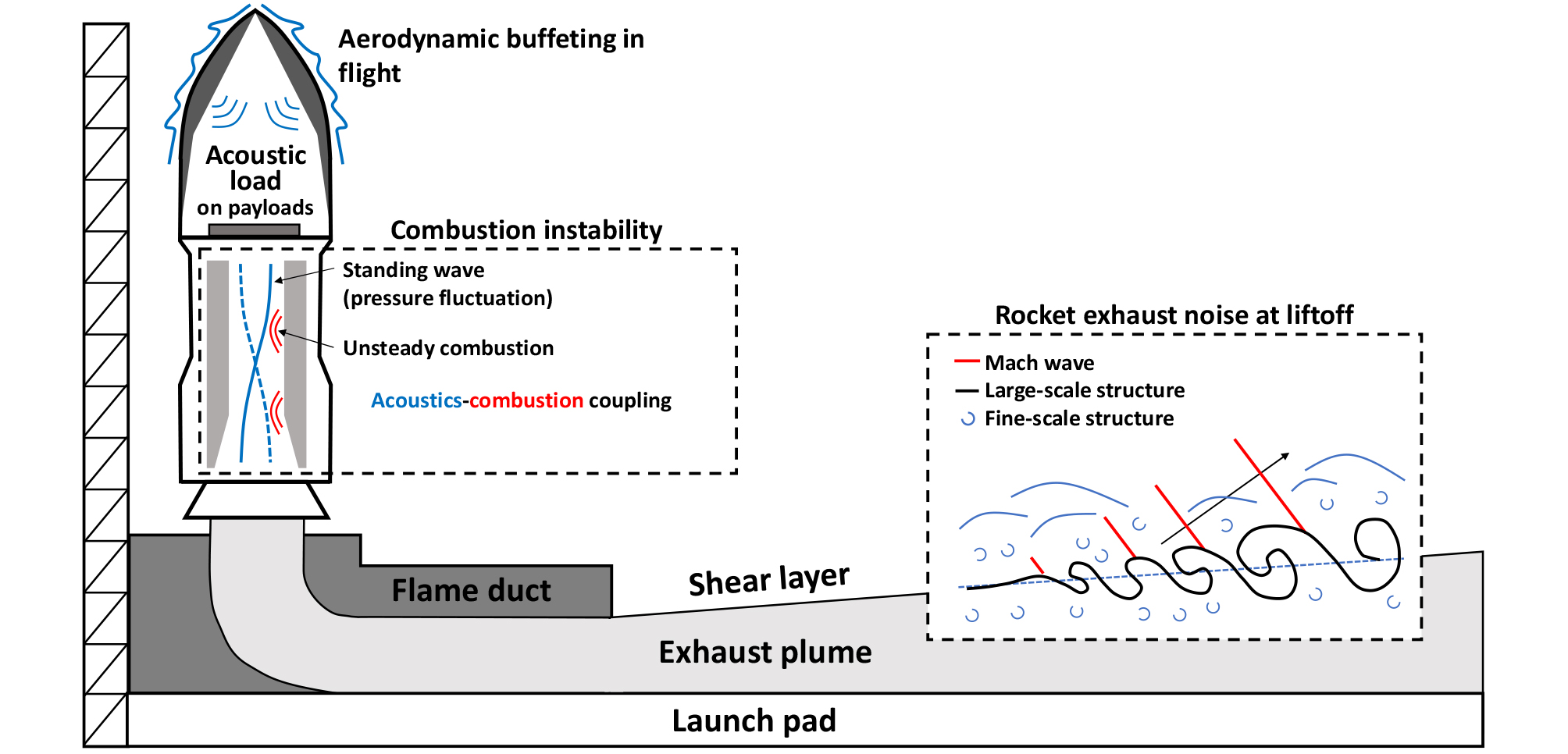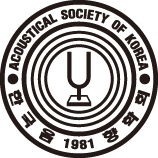The word “rocket” conjures up so much imagination and awe in the psyche of the general public and the specialists alike. If one ever watches a rocket launch, it is very hard to not be impressed by the thunderous roar of the rocket, spewing enormous flames and smokes as it soars to the outer space. For acousticians, a rocket launch is one of the most intense man-made acoustic events, the sound power level of which could reach up to 200 dB (re 1 pW) as in the case of the Saturn V rocket.
Although the sounds of rockets are as conspicuous as any man-made sound can be, the exact physical mechanisms behind their generation and propagation are still shrouded in mystery. Not only that, many practitioners in physical and engineering acoustics have little awareness as to the close connection between rocket science and acoustics. This is perhaps because rockets are not as commonplace as cars and airplanes as a mode of transportation, where a great majority of research and development on rockets as well as their operation have traditionally been conducted by only a handful of government agencies and contractors. However, this state monopoly of rocket science and the associated entry barrier to the field are quickly eroding, as new private enterprises, most notably SpaceX and Blue Origin, are making significant inroads to commercial launch service. As recently witnessed in the success of Crew Dragon Demo-2 mission where SpaceX flew two astronauts to the International Space Station, rockets will increasingly be cheaper and more accessible to the extent that space travel will be as routine as air travel in the not too distant future.
As the tectonic shift toward cheaper rockets and space travel is already underway, two things should be abundantly clear to acousticians, especially those young aspiring researchers who wish to make notable contributions to the advancement of acoustics. First, on a practical level, time will come when there is a strong demand to combat a new kind of noise pollution due to rocket launch and landing. Currently, rocket noise can pose a design issue for its damaging effects on rockets, payloads, and launch pads, but is of minor concern from the community noise perspective because most launch facilities are located in remote, unpopulated areas. However, with ever-increasing frequency of rocket launch, space ports are expected to sprout all around the world, gradually encroaching populated areas. Also, rocket launch noise can travel very far and be heard at population centers at long distances. Rocket launch, once a great spectacle, will someday become a mere source of annoyance to many, and this presents acousticians and noise control engineers with an opportunity to play an important role. Second, acoustics of rockets is a treasure trove of extremely challenging and interesting problems. For one thing, acoustics of rockets, being the marriage of sound, wind, and fire, demands a researcher to be fluent in acoustics, fluid dynamics, and even combustion science. There are theoretical models, physical interpretations, experimental techniques, and acoustic devices and methods yet to be developed by a new breed of competent acousticians and fluid dynamicists, who can comfortably cross the interdisciplinary boundaries.
The aim of this Special Issue is to introduce the readership of the Journal of the Acoustical Society of Korea to acoustics of rockets. Papers dealing with various aspects of launch vehicle acoustics, both inside (vibro- acoustics of payload fairings and combustion instability) and out (rocket exhaust noise and aerodynamic buffeting; see Fig. 1), are invited to provide an overview of the field. Mathews et al. report the measurements and analysis of the far-field noise from three SpaceX Falcon 9 launches, which took place at Vandenberg Air Force Base, CA in 2018 and 2019. Tsutsumi at Japan Aerospace Exploration Agency (JAXA) describes the development of the launch pad for Epsilon rockets, detailing the computational fluid dynamics (CFD) of rocket exhaust noise as well as the design, construction, and testing of the launch pad. Park summarizes the research and development in vibro-acoustics of the payload fairings for two premier Korean space launch vehicles (Naro and Nuri), conducted at Korea Aerospace Research Institute (KARI). Choi et al. present a comprehensive design and analysis procedure for mitigating the acoustic load due to aerodynamic buffeting on payload fairings. Park et al. propose a computationally efficient scheme to remove the boundary reflection artifact in CFD calculations of supersonic jet, based on the two microphone technique that is commonly used in acoustics. Finally, Lee et al. at Agency for Defense Development (ADD) describe a design process for reducing combustion instability in solid propellant rocket motors. Combustion instability refers to unwanted pressure oscillations (or sound waves) in a combustion chamber driven by unsteady combustion of propellant. It is an old problem with a pedigree dating back to the advent of modern rockets, but remains to be a serious design issue in the development of both liquid propellant engines and solid propellant motors.
The collection of papers in the Special Issue is by no means exhaustive in its coverage or depth. We only hope our sketch of the field helps promote awareness and interest about the important role that acoustics plays in rocketry and space exploration.




